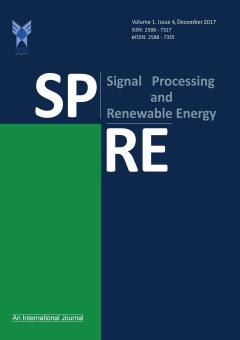-
-
List of Articles
-
Open Access Article
1 - Diagnostic Study for Neurodegenerative Disorders Based on Handwriting Analysis
Leila Soleimanidoust Abdalhossein Rezai Hamideh Barghamadi Iman Ahanian -
Open Access Article
2 - A Review on Improving Power System Stability Using Meta-Heuristic Optimization Algorithms for Power System Stabilizer Tuning
Sayed Mohammad Ali Zanjani Mehdi Mahdavian Mohammad Amin Honarvar Mehdi Riahinasab Arman Fattollahi -
Open Access Article
3 - Image Contrast Enhancement by using Histogram Clipping and 2-D Histogram
Mahdis Golabian Azar Mahmoodzadeh Hamed Agahi -
Open Access Article
4 - Designing a paradigm model of the organization's human resources interaction with subscribers in order to optimize energy consumption (drinking water)
Reza Khordedan Reza Shabannezhad Khas Ali Mokhtari -
Open Access Article
5 - Optimal Scheduling of a Renewable-based Micro Grid Considering Reliability Effect
Amir Ghaedi Reza Sedaghati Mehrdad Mahmoudian -
Open Access Article
6 - A Novel Barrier function adaptive Terminal Sliding Mode Controller for Trajectory Tracking of a Nonholonomic Wheeled Mobile Robot
Fahime Kordi Hamidreza Reza Alikhani Javad Nikoukar
-
The rights to this website are owned by the Raimag Press Management System.
Copyright © 2021-2025







